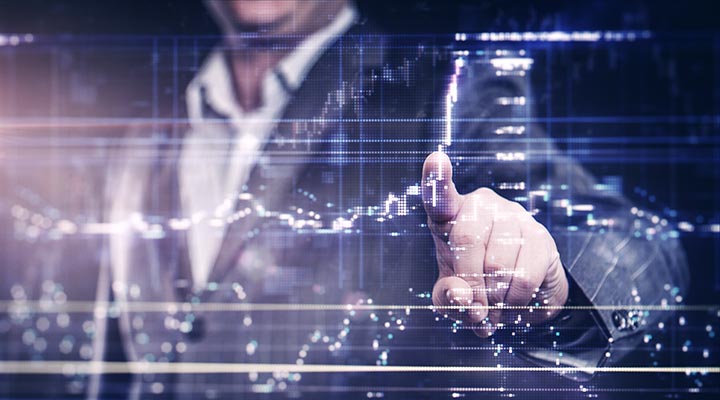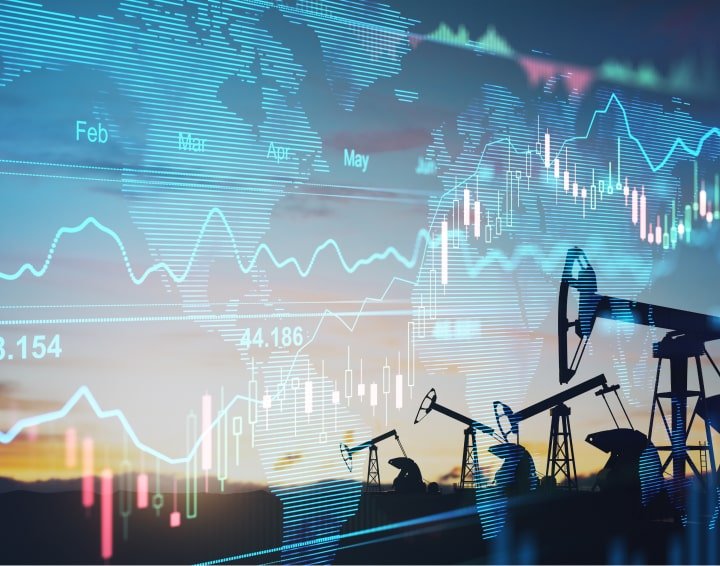
The rise of the commodity quants
Trading commodities has always been about information and relationships. Traders build a network of contacts and spend much of their time gathering information to give them an edge.
The quality of that data always relied on developing relationships with the right people and finding the right source with exclusive information about the movement of any commodity.
The problem with that model has always been that each source would only have a small piece of the overall picture, and getting all the data required to make a well-informed trade was time-intensive. There’s always a risk that the information might be days or weeks out of date.
Trading commodities has always been about information and relationships.
But our industry – as with many others – has been transformed by digital disruption in recent years. And, as access to data and information has become universal, so is a fundamental trader’s ability to trade on proprietary information blunted.
Being a successful trader is now less about who you know and more about what you do with all the data and models you can access.
Trading commodities is no longer just a relationship business; it’s becoming a data science business. That’s where quantitative trading and research are key.

The age of the quant
That disruption has heralded the emerging age of the ‘quant’.
Quantitative strategies have revolutionised how commodities are traded and the diversity of tools available to our traders.
Long the preserve of hedge funds, these quant strategies, like the growing area of risk premia, that take advantage of factors including trend, carry, momentum seasonality and congestion, are perfectly suited to commodity trading.
This is because our markets are built on known – but sometimes idiosyncratic – underlying fundamentals, i.e., supply and demand, the weather and storage capacity.
At Engelhart, we know how valuable fundamental analysis can be, particularly in non-benchmark markets where data isn’t always as clear or readily available. That will almost certainly always be the case, and we view the future of commodities trading as human traders and machines (or algorithms) working in symbiosis.
In a trading landscape where a minute can make all the difference and volatility is abundant, everyone is looking for an edge, and that’s what our team of quantitative analysts gives us.
But our approach to quantitative analysis is always underpinned by a simple question:
How can quantitative research help our traders trade better?
The technology catalyst
The recent growth in technology is creating a step change in how we can trade commodities markets.
Quantitative strategies that first emerged in the 1990s and 2000s and gained the greatest traction with a new generation of hedge funds have become established as a vital part of our diversified trading strategy.
In the last decade, we’ve seen a revolution in big data, cloud computing, machine learning and AI, all of which have enabled the rise of the commodity quants.
The exponential increase in commodities data generation and storage capacity particularly has created the perfect sandpit for quantitative analysts to build models and test ideas.

Across all commodities, there’s been an extraordinary increase in the availability of real-time data. Cheap sensors, ubiquitous internet connections and real-time monitoring make it possible to track and quantify many of the commodities we trade.
Satellite imagery, weather data, and the Automatic Identification System (AIS) tracking ships are just three examples of the big data that can be used in quant analysis to inform our trading strategies.
In agricultural commodities, for example, our quant analysts can process weather model output data to assess the likely weather patterns. They then compare that data to historical analogues and remote sensing imagery of current crop states to predict crop yields and hence accurate supply and price predictions.
Many of the strategies that we use to trade commodities today are only tradeable and priceable because of the technology
Cloud computing power
The rise of quantitative trading in commodities is also correlated to the cost-effectiveness of such strategies. The cost of the hardware and computing power needed to analyse large datasets or run complex models was prohibitive to commodities traders for many years.
Cloud computing has changed that. We no longer need to make a substantial investment in physical infrastructure, and we can pay-as-we-go for computing power. This enables us, and many other commodity traders, to run complex quantitative models without significant overheads.
Many of the strategies we use to trade commodities today are only tradeable and priceable because of the technology and the giant leap forward that computing power has taken in recent years.
The exciting thing is that quantitative analysis is evolving as quickly as the technology is. Each year brings new quant strategies capable of isolating specific types of returns in a cost-effective way.

How does quantitative trading work?
To the uninitiated, quantitative trading can feel complex and confusing, but once understood, it’s clear how powerful quantitative strategies are for commodities trading.
At its most basic level, quantitative analysis uses powerful computing, mathematical models, and huge datasets to either identify trends and price patterns, develop new and faster execution strategies or support fundamental traders in making trading decisions.
Quantitative trading strategies are valuable because they’re agnostic
There’s a simple analogy with meteorology: a meteorologist forecasts a 90% chance of rain on a day that starts sunny. Even though it may feel counter-intuitive, they’ve made the forecast by collecting and analysing the global ‘starting conditions’ and then feeding that data into the physics package in their weather model.
The analysis identifies specific patterns that human nowcasting may miss; and in this instance, it suggests that 90% of the time, this specific pattern means rain is likely. The meteorologist can then make their forecast with confidence, and so it is with quantitative trading.
Quantitative trading strategies are valuable because they’re agnostic, part of a dispassionate decision-making process where it’s the patterns and numbers that matter, not emotions associated with some high-stakes financial trading.
But there are risks and limitations.
The machines aren’t taking over
There’s inherent complexity in many of the commodities we trade, and although our quantitative models can help our traders make better decisions, the knowledge, experience and expertise of our fundamental traders are still our principal IP.

We can see the limitations of quantitative trading, particularly in the division between benchmark and non-benchmark commodities. Non-benchmarks, like some local energy markets and carbon, for instance, sometimes lack historical data and/or liquidity; they also may face significant variables like changing regulations that quant analysis can’t model.
These markets need specific knowledge and insight from fundamental traders, and both man and machine were required to capture the outsized rewards that were available in 2021 when we saw markets like European natural gas surge 270%, German power 300% and carbon 145%.
The financialisation of commodities
In comparison, quant strategies shine in the more mature benchmark commodities like crude oil, copper and gold, where fundamental traders are now struggling to make money. That’s because of the increasing financialisation we’re seeing in these markets and how far prices can decouple from the underlying fundamentals.
Instead of supply and demand and the many variables like weather and seasonality being key price drivers in these commodities, it’s actually now more likely to be investment flows – actual and anticipated – that shape the price action and risk appetite. If more market participants are using commodities to hedge inflation, or gain exposure to China’s reopening, as we’ve seen this year, prices may not reflect fundamentals.
The oil price this year is a powerful example of the dangers for fundamental traders operating in these financialised markets against their algorithmic counterparts. It’s fair to say that most experienced oil traders have been bullish on the price of oil this year; in fact, there have been some big bets in that direction, and yet the price of oil is down around 10%.

That discrepancy has, in part, been driven by quant strategies and algorithms speculatively selling.
Fundamentally we don’t believe the machines are taking over
Instead, we’re planning for the continual evolution of the synergy between our fundamental trading teams and our quants. We expect to see even more integration between quant analysis, algorithms, and the more traditional trading and origination roles in the future.
Quantitative data coupled with market insights from a trader’s experience gives traders the ability to conduct superior analysis. In turn, that leads to better trading strategies than algorithms alone. We’re embracing digital transformation at Engelhart and would encourage our whole industry to identify opportunities from the technological advances we’re seeing.
Quantitative trading risks
While quantitative strategies hold immense potential, they also present challenges and risks that must be mitigated. These include:
Model risk: The risk that the mathematical model is incorrect or misused.
Data risk: The risk that the data used is incorrect or misinterpreted.
Regime change risk: Risks associated with the macro economy, geopolitics or policy change that quantitative models can’t predict.
Successfully navigating these risks requires the deep understanding of commodities markets our fundamental traders provide, in combination with the insights provided by our quant analysts iterating and improving our trading strategies and models.
Quantitative strategies must constantly evolve to maintain their edge in an ever-changing market environment. This includes incorporating the latest advances, such as machine learning and artificial intelligence, which hold great promise.
The rise of the quants has created a significant paradigm shift in commodity trading. Quantitative strategies have become an indispensable tool for navigating the complexity and volatility of commodity markets. They provide a scientific, data-driven approach to trading that complements, rather than replaces, traditional fundamental analysis.
In general, over the long-term, commodities will always naturally revert to their underlying fundamentals, but their path along that trend can be derailed at any time by increased financialisation, macroeconomic factors, and a change to the fundamentals themselves.
No quantitative models alone could accurately predict that path, just as no single fundamental trader could. It’s the synergy between quantitative analysis and fundamental trading that’s so important to how we do business, now and in the future.
